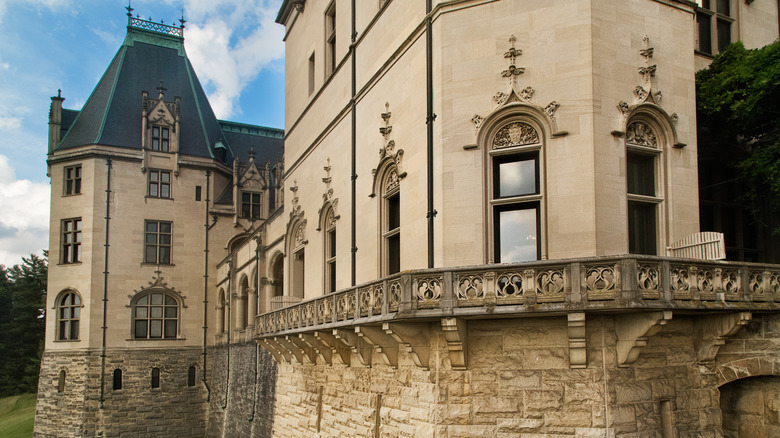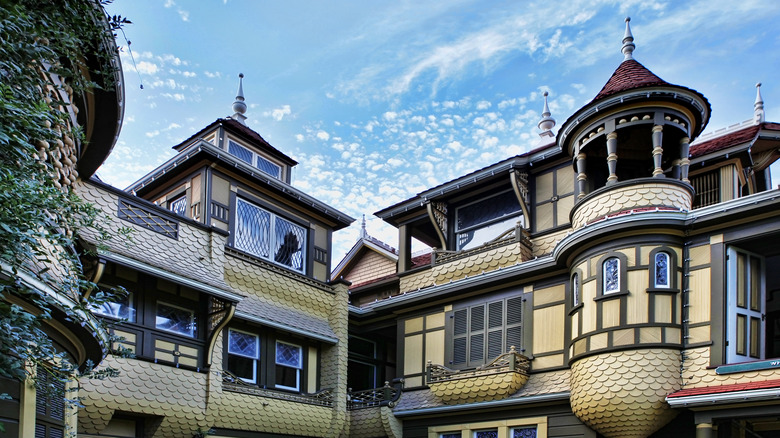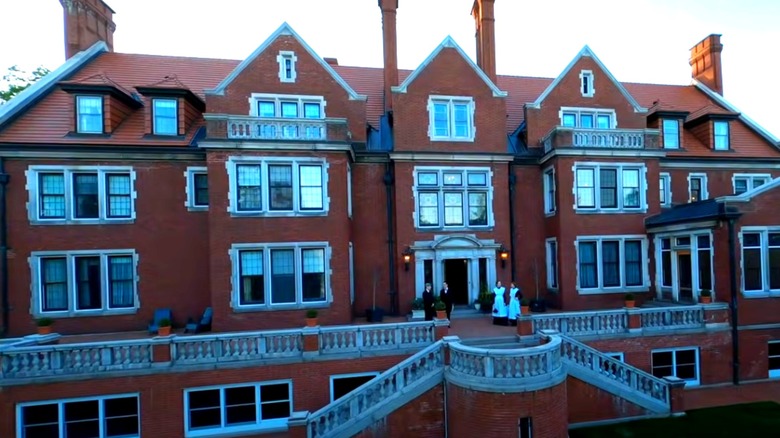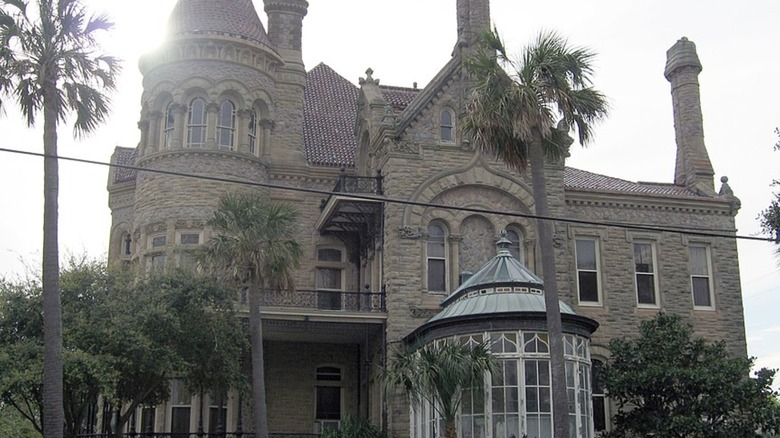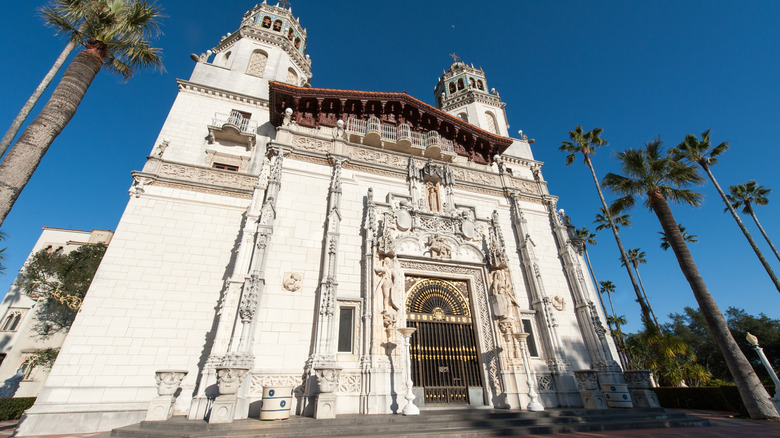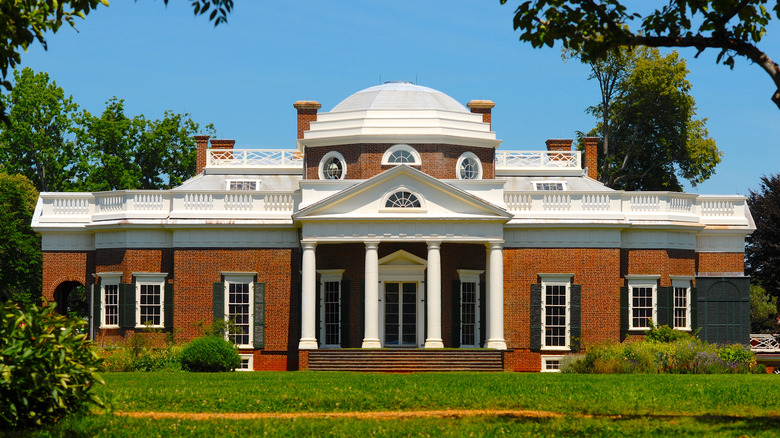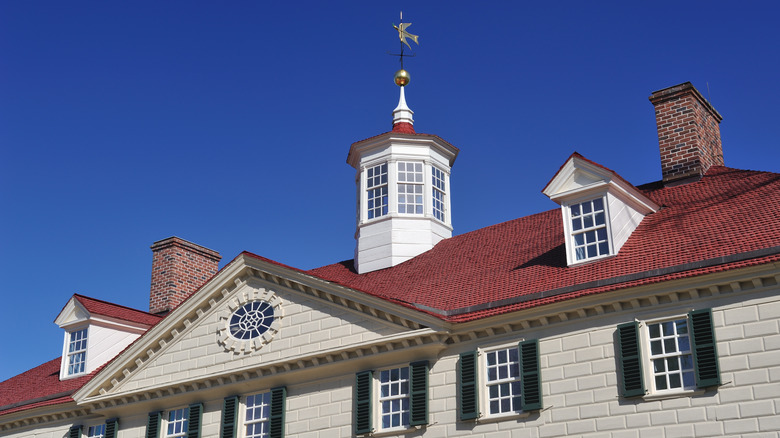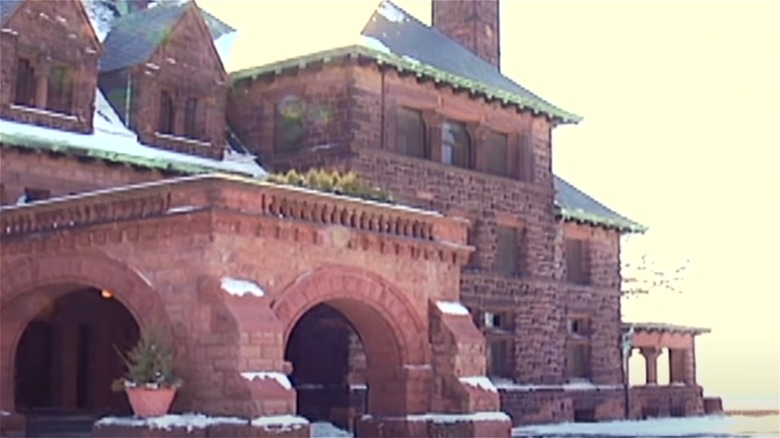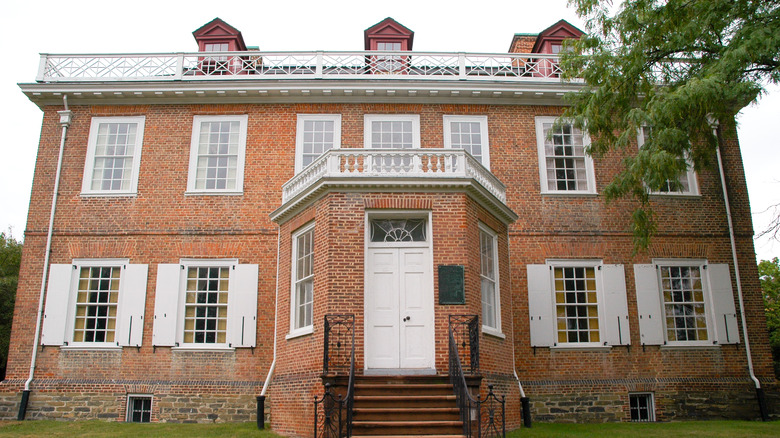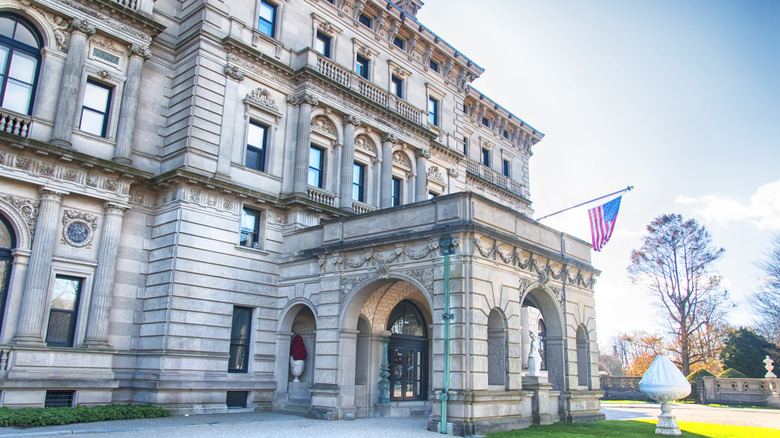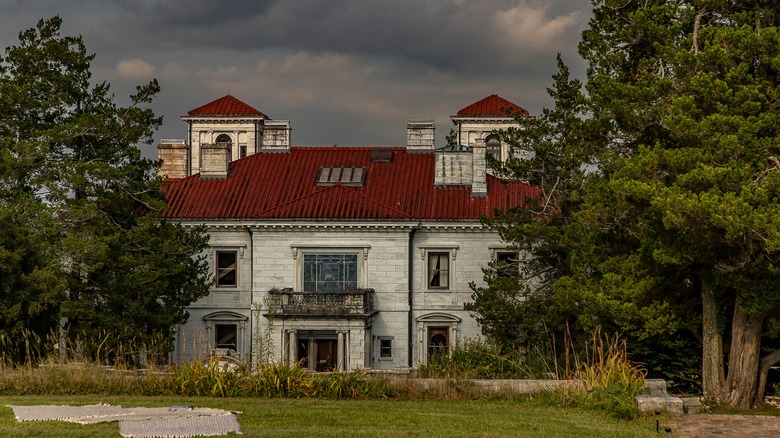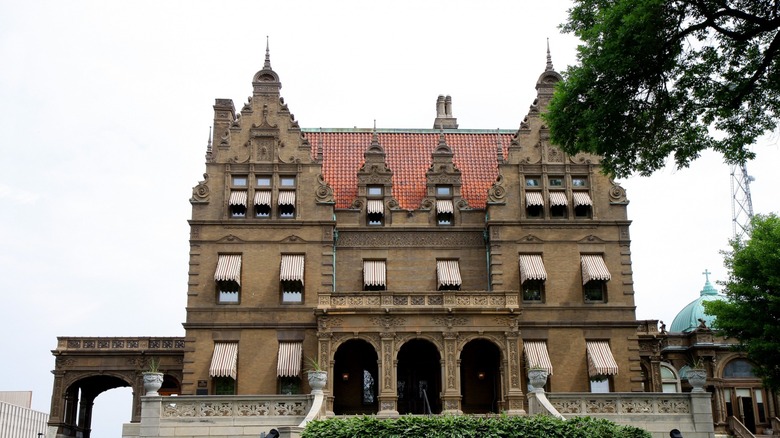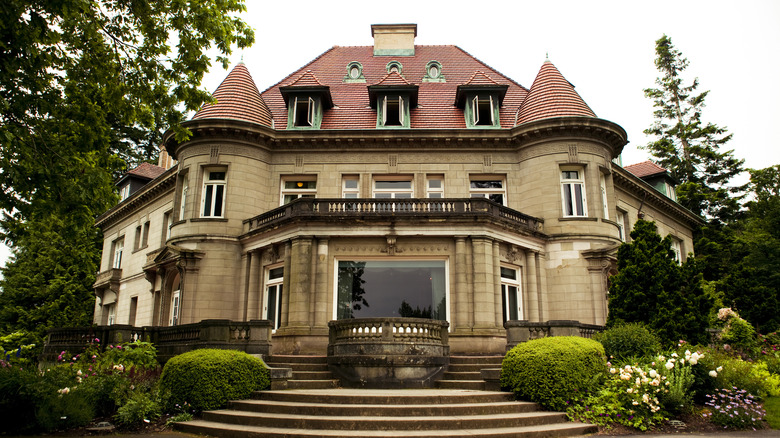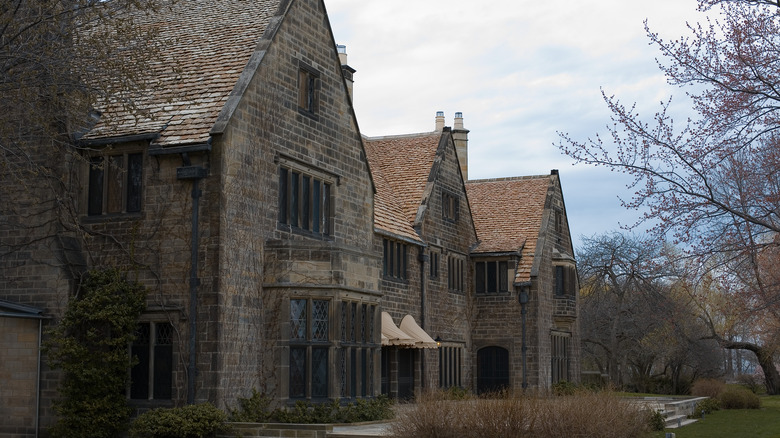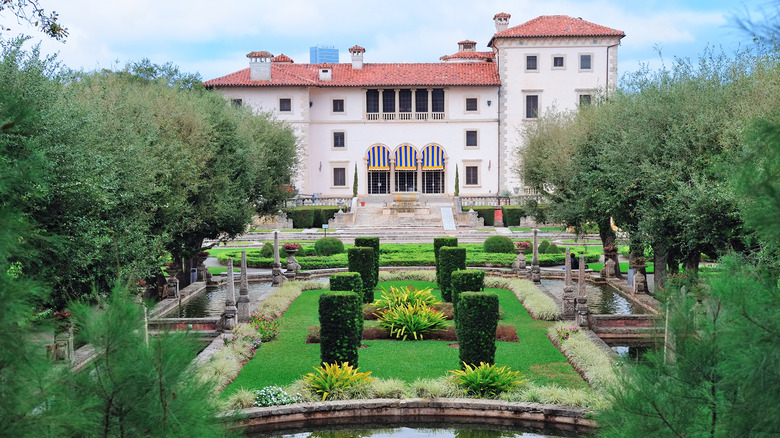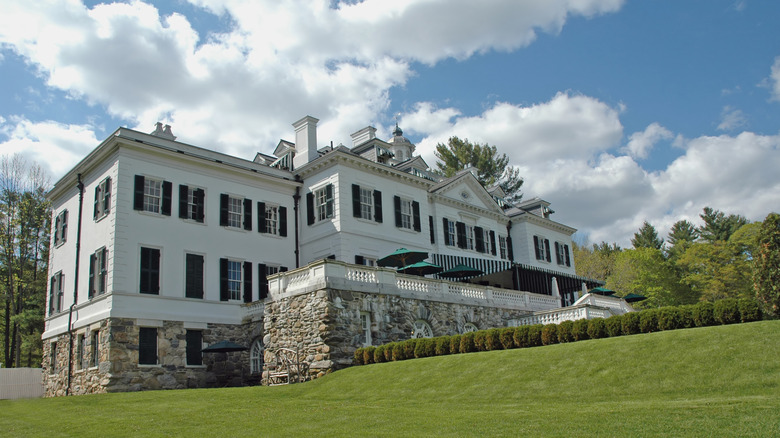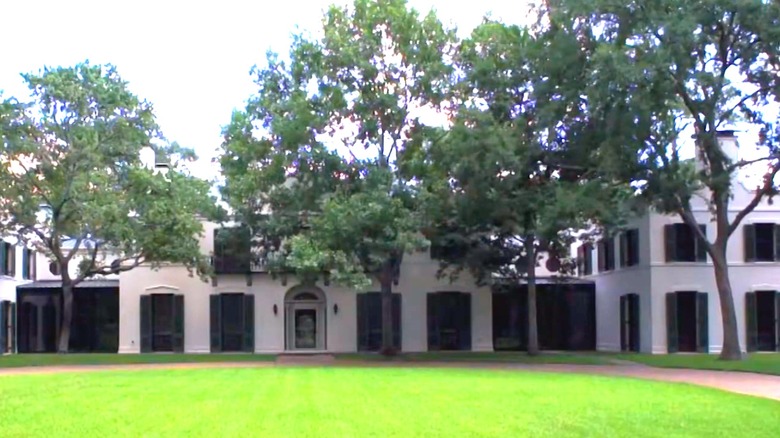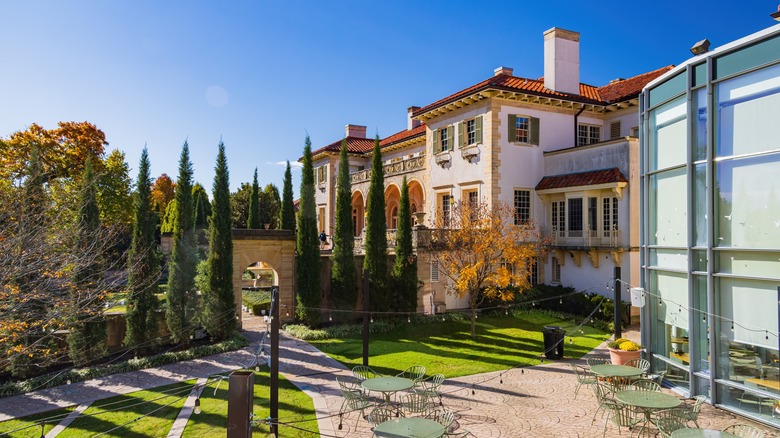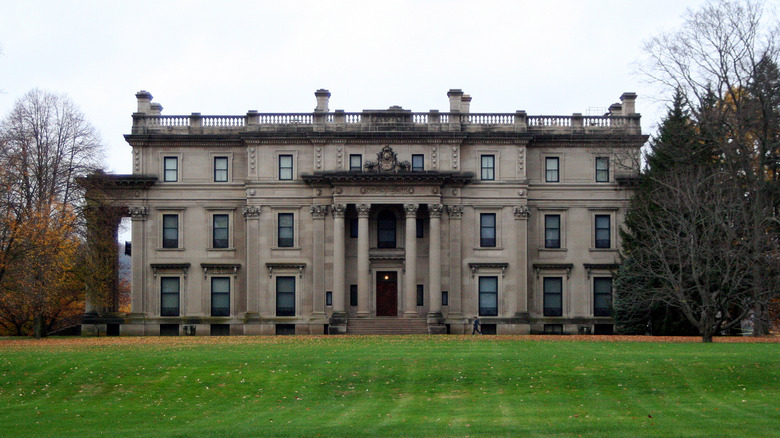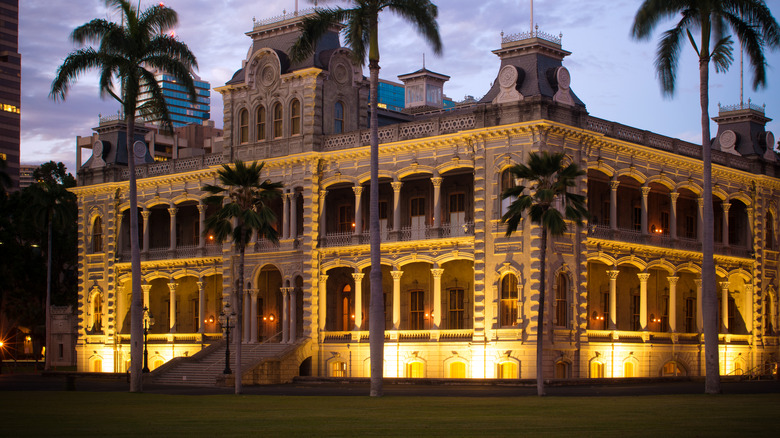20 Historic Mansions To Visit In America
intro
There's something endlessly captivating about strolling down the halls of a lavish estate and imagining what it felt like to live there in its heyday. Whether it's a sprawling country manor or a grand Victorian mansion, every residence has its own personality and echoes from a time when it once vibrated with energy and life from parties to plans to political intrigue. With their opulent furnishings and period architecture, stepping into these estates can feel like stepping into a moment that was frozen in time long ago. For those who love to connect with architectural history or simply admire the beauty of a luxurious manor, it's a chance to feel immersed in a bygone era.
While we might not have any thousand-year-old, real castles like the rest of the world, the United States certainly has its share of grand mansions. And many are open for guests to tour. Get ready to feel like the lord or lady of the manor as we take a look at 20 luxurious mansions visitors can check out in the U.S.
1. Biltmore Estate (Asheville, North Carolina)
Coming in at a jaw-dropping 178,926 square feet, the Biltmore Estate is the largest privately owned home in the nation. This palatial Gilded Age mansion was built in the 1880s for George W. Vanderbilt II, an art collector, all-American Renaissance man, and Vanderbilt fortune heir.
The 250-room mansion looks like something out of a fairy tale thanks to its Châteauesque design, a Revivalist style inspired by 16th-century French Renaissance châteaux. Biltmore's architectural and landscaping team was led by Richard Morris Hunt and Frederick Law Olmsted, respectively known for their work on the Statue of Liberty's pedestal and Central Park. When completed, it contained 35 bedrooms, 43 bathrooms and 65 fireplaces. In those days, Biltmore played host to many famous guests including writer Edith Wharton, who celebrated Christmas there in 1905.
During World War II, the estate protected priceless works of art brought there from the National Gallery of Art in Washington, D.C. Today, the estate contains an extensive art collection of more than 92,000 items including European masters like Renoir and Monet and is home to a world-renowned winery.
2. Winchester Mystery House (San Jose, California)
Few estates are as intriguing and misunderstood as the Winchester Mystery House. The lore of this labyrinthine and seemingly metastasized Queen Anne Revival begins with Sarah Winchester, widow to firearms magnate William Wirt Winchester. After losing her 6-week-old daughter and husband in a short time frame, the wealthy widow moved from the East Coast to the Bay Area to be closer to family. Soon after purchasing the comparably modest farmhouse called Llanada Villa that would become the Mystery House of legend, Winchester began remodeling. And from then until her death in 1922, construction on the house never stopped. The farmhouse became her obsession — a 24,000-square-foot, 160-room maze complete with stairways and doors to nowhere.
Traditional legend has it Winchester's endless remodeling project was chasing a medium's warning that construction should never stop, her Promethean penance for a fortune amassed from death-dealing weapons. The tale was recounted in the fanciful 2018 Helen Mirren-starring supernatural horror "Winchester." But some historians like Janan Boehme believe the ceaseless construction was really an act of local philanthropy, with Boehme telling L.A. Times, "This house, in itself, was her biggest social work of all."
3. Glensheen (Duluth, Minnesota)
Situated majestically on the shore of Lake Superior, Glensheen is the historic home of the Congdons, an influential family who amassed their wealth when attorney and power broker Chester Congdon invested in Minnesota's iron and copper mines during the late 19th century. Spread across 12 acres of breathtaking shoreline along the waterfront, Glensheen is a sprawling 39-room, 27,000-square-foot estate.
The grand domicile was built from 1905 to 1908, a collaboration between interior designer William A. French, landscape architect Charles W. Leavitt, and Clarence H. Johnston. Like Biltmore, Glensheen is a Gilded Age mansion influenced by the contemporary Beaux-Arts movement, identifiable by its ornate designs, statuary, and other Classical influences. Today, Glensheen is run as a museum by the University of Minnesota. Tour guides take groups through the period-decorated home —- even if they don't discuss the 1977 slaying of heiress Elisabeth Congdon and her nurse.
4. Bishop's Palace (Galveston, Texas)
There's a breathtaking castle, complete with towers straight out of a fairytale, located in Galveston, Texas. Designed by renowned Galveston architect Nicholas Clayton, the 19,082 square foot Bishop's Palace was commissioned by the U.S. Representative Walter Gresham to house his large family and host lavish parties of up to 1,000 guests. An eclectic High Victorian stone mansion built from locally sourced granite, white limestone, and red sandstone and completed in 1892, the house is a delightful mishmash of French Renaissance, Richardsonian Romanesque, and New England Shingle. Exterior ornamentation like cylindrical turrets and towers, French New Orleans and Victorian ironwork, and Tudor, Neo-Gothic, and Moorish motifs are the icing on this Disneyesque cake.
The interior is every bit as dreamy with its London damask wallpaper, Venetian chandeliers, Italian marble, ornate trim, and decadent wood paneling. After the solid stonework facade easily withstood the destructive hurricane of 1900, the family opened its doors to hundreds of storm refugees. Those doors are still opening today as part of Galveston's Historic Home Register.
5. Hearst Castle or La Cuesta Encantada (San Simeon, California)
Some may know Hearst Castle better as the inspiration for Xanadu, the fictional estate of publishing tycoon Charles Foster Kane in Orson Welles' 1941 film "Citizen Kane." Just as the character of Kane was satirizing real-life publisher William Randolph Hearst, Xanadu was standing in for the sprawling Hearst Castle. The 97,000-acre swath of land was originally purchased by Hearst's father for use as ranchland and a family glamping estate dubbed "Camp Hill" — think chef-prepared meals in fully furnished tents. In 1922, Hearst worked with the Beaux-Arts-trained architect Julia Morgan to imagine the ornate Spanish cathedral-inspired Mediterranean Revival build he called La Cuesta Encantada, meaning "enchanted hill."
From the bas-relief knights flanking the entrance to the painted ceiling that once graced an Italian palazzo, every inch of this palatial 68,500-square-foot estate captures the imagination. Now a museum, Hearst Castle boasts an astonishing 115 rooms including 40 bathrooms, 38 bedrooms, a beauty salon, and a theater.
6. Monticello (Charlottesville, Virginia)
Few historical mansions capture the paradox of Enlightenment-era American liberty ideals in a pre-abolition United States like Thomas Jefferson's plantation estate Monticello. The plantation home is a distinctive example of Neoclassical architecture, a design movement marked by porticos, columns, domes and balustrades echoing classical Greek and Roman ideals. An architectural marvel designed by the statesman himself decades before he ascended to the United States presidency, Jefferson broke ground in 1768 at only 25 years old at the gentle 868-foot peak he called "Monticello," old Italian for "little mountain."
The 11,000-square-foot home features 35 rooms, each a different shape. Many of them can be explored online via a 360º panoramic tour of Monticello. About 60% of the furnishings of the home — an American destination every history buff should visit — are or may be items owned by Jefferson, including the Alcove Bed in which he died, 50 years to the day after the adoption of the Declaration of Independence.
7. Mount Vernon (Mount Vernon, Virginia)
George Washington's famous plantation, Mount Vernon, began as a one-and-a-half-story home built by the first president's father, who built it in 1734. Designed by the elder Washington and an unnamed architect, the original home was erected in a British Palladian style, a look that reflected Renaissance Venetian designs inspired by Roman and Greek traditions. The architecture and landscape drew on the Picturesque movement that imagined buildings set in a more naturalistic environment.
After inheriting the estate in 1754, George began expanding Mount Vernon into an elegant 21-room residence. Today, the three-story home clocks in at an impressive 11,000 square feet. The restored front parlor, where Martha Washington presided over tea service, once hosted such acclaimed names as the Marquis de Lafayette and Thomas Jefferson. Several different tours of the estate are available including a tour that focuses on the lives and experiences of the many enslaved people who once lived there.
8. James J. Hill House (St. Paul, Minnesota)
A living embodiment of the American Dream mythos, Canadian-American magnateJames J. Hill was born to Irish-Canadian immigrants and spent two decades working in the shipping industry before building his fortune on a lucky buy in the railroad business. As no self-respecting empire builder would be caught without a lavish estate to serve as a testament to his wealth, Hill took to erecting his own, overseeing every step of the construction and planning from design to furnishment, going through a few architects in the process.
A Richardsonian Romanesque mansion, the James J. Hill House stakes out a prominent part of Minnesota's Summit Avenue, home to the longest stretch of Victorian-era homes in the United States. When completed in 1891, the 36,000-square-foot, five-story home included 13 bathrooms, 22 fireplaces, a two-story art gallery, three-story pipe organ, and 16 cut-glass chandeliers. Today, it's owned by the Minnesota Historical Society, which shows off everything from the impressive library to the bathtub.
9. Schuyler Mansion (Albany, New York)
If you've seen the Broadway musical "Hamilton," you've heard of the famed Schuyler sisters who once inhabited this storied home that was best known as the home of their father, Revolutionary War General Philip Schuyler before Lin-Manuel Miranda came along. When Schuyler Mansion was originally completed in 1765, the Georgian mansion was dramatically different from the traditional Dutch homes that dotted the Albany countryside, which was still semi-wilderness at the time.
Aside from modern features like power lines and pavement, the Georgian mansion still looks much as it did in the Schuylers' day, right down to the wallpaper and carpet. It's easy to imagine what it felt like to be present when Eliza Schuyler was married to founding father Alexander Hamilton at the stately home in 1780.
10. The Breakers (Newport, Rhode Island)
The Breakers, once the Italian Renaissance-style summer home of Cornelius Vanderbilt II, chairman and president of the New York Central Railroad system, is one of America's most impressive feats of architecture. Built in the 1890s by architect Richard Morris Hunt, the 70-room palazzo in Newport, Rhode Island, was inspired by the 16th-century palaces of Genoa and Turin and overlooks the Atlantic Ocean. Vanderbilt erected the palatial 140,000-square-foot Gilded Age mansion after the original wood property burnt down in 1885. The restored stable and carriage house gives visitors a glimpse into a long-gone world, where 12 grooms and stableboys prepared and provided horse-drawn carriages for the Vanderbilt family.
11. Swannanoa Palace (Afton, Virginia)
Railroad executive James Dooley built the 52-room Swannanoa Palace in 1912 for his wife, Sallie May. He placed the Italian Renaissance Revival villa high atop Virginia's famed Blue Ridge Mountains, known for some of the most breathtaking views in America. More than 300 artisans were hired to create the mountain retreat as a replica of Rome's Villa de Medici, the ancestral home of the famed Medici family. The villa's features include a 4,000-piece Tiffany stained-glass window, Georgian and Italian marble, and a domed ceiling bearing Sallie May's likeness. Despite having weathered some difficult periods in the past when the estate's future was not so certain, the 22,000-square-foot palace now stands restored to its original glory and is available seasonally for public tours.
12. Pabst Mansion (Milwaukee, Wisconsin)
The price of beer has changed over time, but you can call this spot the house that beer built. The Captain Frederick Pabst Mansion in Milwaukee was constructed for the beer baron and his family in 1890. With its terra cotta scrollwork, steep gables, and a neo-Baroque domed pavilion that was featured at the World's Columbian Exposition of 1893 in Chicago, the two-and-a-half story home is a textbook example of Flemish Renaissance Revival architecture.
After several decades serving as the local archbishop's residence, the 20,000-square-foot home narrowly avoided getting torn down in the 1970s to make way for a hotel parking lot. Fortunately, a preservation society purchased the estate and restored it to its 19th-century glory using an 1897 photo album as a historical guide.
13. Pittock Mansion (Portland, Oregon)
Portland's architectural jewel, Pittock Mansion is an Italianate and French Renaissance-style château situated in the city's West Hills, where it enjoys a breathtaking view of the majestic Mount Hood, Mount St. Helens, Mount Adams, Mount Rainier, and Mount Jefferson on a clear day. The mansion's interior is beautifully eclectic with details like a Turkish smoking room, a French-style oval drawing room, an opulent central stairwell connecting three stories, and a formal Edwardian dining room with a mirrored wall designed to wow guests by reflecting Mount Hood. Period furnishings and artifacts ground Portland's Pittock Mansion in the early 1900s.
The 16,000-square-foot estate was built in 1914 for the family of Henry Pittock, publisher of the Oregonian newspaper. It remained occupied by the Pittocks until 1958. Just a few years after it became vacant, damage from the 1962 Columbus Day Storm and squatters began to pose an existential threat. Thankfully, the city purchased it, restoring and converting it for the world to enjoy.
14. Edsel and Eleanor Ford House (Grosse Pointe Shores, Michigan)
Situated northeast of Detroit on Lake St. Clair's Gaukler Point is the enchanting abode commissioned by Henry Ford's son Edsel, best known for lending his name to one of history's most notorious flops. Having fallen in love with the picturesque cottages of the rural Cotswolds in England, Edsel and his wife Eleanor commissioned Albert Kahn, a prolific architect with everything from skyscrapers to suburban homes under his belt, and Jens Jensen, a Danish landscape artist known for his Chicago park projects.
After an inspiration-gathering trip to England with Kahn in tow, the Fords began construction on the Edsel Ford Home in 1926. Nearly three years later, the family took up residence in the dreamy domicile. With ivy climbing all over its sandstone exterior, the charming estate feels like something out of a Thomas Kincaid painting despite its 60 rooms and expansive 30,000-square-foot footprint. Inside, guests will find an extensive collection of art and romantic interiors inspired by English manor houses of yore.
15. Vizcaya (Miami, Florida)
If the exterior of Vizcaya seems vaguely familiar, it's because there's a good chance you've seen it in a film like "Iron Man 3," "Any Given Sunday," or "Ace Ventura: Pet Detective." The estate was originally purchased by James Deering, an industrialist whose familial wealth came from a harvester company. A conservationist, Deering purchased 180 acres of Floridian inland tropical forest and mangrove swamps with an aim at preserving them while building his winter estate along the shore. He began construction on the vast estate in 1912, officially taking up residence on Christmas 1916 after arriving via yacht.
Named for Vizcaya, a region in northern Spain's Basque country, the finished estate boasted a footprint of 45,225 square feet and featured upwards of 50 rooms in the main house alone. The mansion, now converted into a museum, is distinctive for its Baroque, Mediterranean, and Italian Renaissance inspirations.
16. The Mount (Lenox, Massachusetts)
The Mount was the home of author Edith Wharton, who would become the first woman to win a Pulitzer Prize for her 1920 Gilded Age novel "The Age of Innocence," notable for its realistic portrayal of the aristocracy. With her personal foundation in architecture and design, Wharton designed the home herself in collaboration with architects Francis L.V. Hoppin and Ogden Codman, Jr.
Constructed from 1901 through 1902, the mansion was inspired by the 17th-century English country home Belton House, the estate used as King George's house in Netflix's "Queen Charlotte: A Bridgerton Story." With a square footage of 16,850 square feet, the 35-room, four-story estate features a dreamy landscape with a formal flower garden, rock garden, grass terraces, and an Italian walled garden, a perfect backdrop for inspiring Wharton's pen.
17. Bayou Bend (Houston, Texas)
Designed by architect John F. Staub for the prominent Houston family the Hoggs, known for their philanthropy and commitment to the arts, Bayou Bend aimed to combine the romance of New Orleans' Spanish Creole architecture with a stately English Georgian aesthetic. To that end, Staub quite literally drew from New Orleans architecture, borrowing details like a columned portico and curved staircase from Southern plantation houses and salvaging an antique wrought iron balcony from a New Orleans demolition. Ima Hogg dubbed the end product "Latin Colonial."
To conserve the natural bayou ecosystem, the Hoggs interfered with the landscape as little as possible, proudly declaring they only removed one tree for the home's construction. Today, the home sits on 14 acres of lush organic gardens and is home to the Museum of Fine Arts Houston collection for American paintings and decorative arts.
18. Philbrook (Tulsa, Oklahoma)
A jewel in the heart of Oklahoma's Green Country, the city of Tulsa was built by oil money. And few early Tulsans had more of that black gold green than the prominent Waite Phillips family. In 1926, Phillips commissioned a home from Kansas City architect Edward Buehler Delk, whose art deco and neo-Gothic revival designs can be seen in Tulsa's iconic Philtower building or Kansas City's Starlight Theatre.
For the 72-room Italian Renaissance villa originally known as Philbrook Villa, Buehler pulled out all the stops. Highlights include glittering ground white marble mixed into stucco, travertine and marble fireplaces, teak floors, Kasota limestone meant to evoke Italian travertine, ornate stonework, beveled art glass, ceilings inspired by Italian villas, Corinthian columns, and Italianate tiles, just to start. Today, the 32,000-square-foot mansion serves as an art museum known for its lush formal gardens and extensive art collection from around the world.
19. Vanderbilt Mansion (Hyde Park, New York)
The tale of the storied Vanderbilt Mansion dates back to the 18th century when John Bard purchased the land, naming it "Hyde Park." In those early days, it boasted several boat landings, two residences, mills, a store, and a farm. The estate would change hands a few times before joining the holdings of Frederick W. Vanderbilt, who aimed to build a home inspired by the grand manors of Europe but equipped with modern amenities. Completed in 1899, the resultant Beaux-Arts Italian Renaissance mansion represents yet another fine example of the Vanderbilt descendants' commitment to looking like the old money of European nobles.
From its semicircular portico to its symmetry and pilasters, the palatial estate was heavily inspired by the Langdon mansion that once graced the estate. Clocking in at 45,000 square feet, six floors, and 54 rooms, the neoclassical estate is considered one of the best-preserved Gilded Age mansions in the United States.
20. 'Iolani Palace (Honolulu, Hawaii)
O'ahu governor Chief Mataio Kekūanaōʻa originally began construction on 'Iolani in 1844 with plans to gift the grand home to his daughter. Feeling it would make a perfect royal residence, King Kamehameha III purchased the land, taking up residence in 1845. On December 31, 1879, Kamehameha began construction on 'Iolani Palace, ceremonially christening it with full Masonic rites. Construction was completed in 1882, with the royal residence exemplary for its state-of-the-art amenities including indoor plumbing supplied by an artesian well, electricity, and a modern telephone system.
'Iolani stands as a stunning example of Hawaiian Renaissance architecture. Some of the palace's more noteworthy features include the use of walnut, white cedar, and native hardwoods including kamani, kou, and ohia as well as its koa grand staircase. Sadly, the elegant estate would only serve as a home to the monarchy for 11 years until a United States-backed coup overthrew its last regent, Queen Liliʻuokalani.

